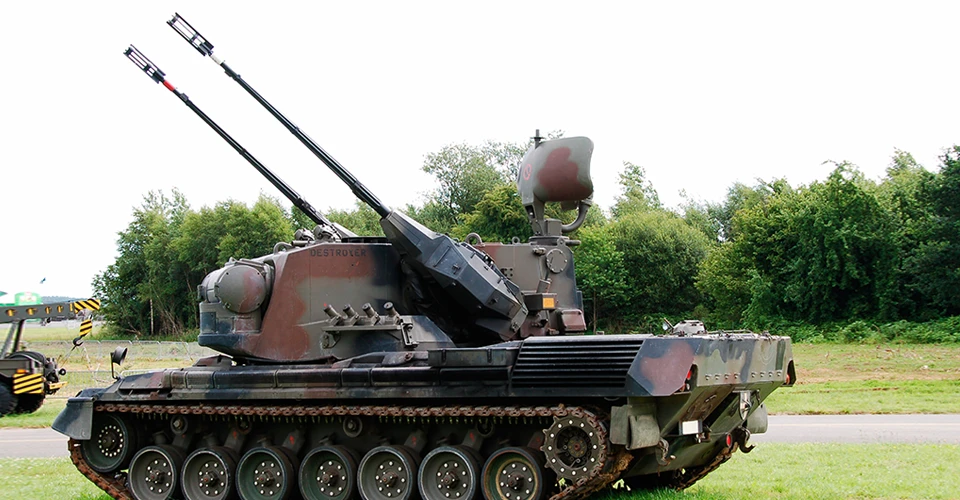Russia's new rocket-powered glide bombs: double range, twice as powerful
global.espreso.tv
Tue, 21 Oct 2025 11:26:00 +0300

Specifically, last week Russian strikes hit Mykolaiv and Lozova, and this week they were recorded in the Poltava region.On October 20, a senior lieutenant of the Ukrainian Defense Forces, callsign Alex, wrote that the Russians have "begun gradually using rocket-powered glide bombs, which cover a combat radius of over 100 km."Aviation expert Valerii Romanenko, a senior researcher at the State Aviation Museum, told Espreso that the weapon is not unique but a hybrid of a gliding bomb and a rocket."Until now, the enemy used standard guided bombs with UMPK modules, where the Russians attached a wing to a kind of glide kit. With these UMPK modules, the bomb would travel about 60–70 kilometers, even though it was launched 40 kilometers from the front line. This meant penetration into our territory was around 15–20 kilometers. Now, however, the Russians are pursuing a new trend—they want to create a fairly deep strike zone against us. That's why they are using hybrids of gliding bombs and rockets," Romanenko said.Twice as powerful as regular guided bombsAccording to him, the Russians have three main ways of producing such bombs."For example, the GRIM-1 is a hybrid built on the air-to-surface missile Kh-38, which was developed back in the Soviet Union. So the GRIM-1 largely uses the same airframe as the Kh-38. But the Russians stuffed it with explosives instead of complex equipment, so the warhead weight is now 315 kilograms. In addition to being a winged bomb, they fitted a low-power rocket motor, giving the weapon a range of up to 120 kilometers if released from an altitude of at least 12,000 meters. And accordingly, the aircraft must accelerate to roughly 900 kilometers per hour," the expert noted.Romanenko adds that if such weapons are released 40 kilometers from the frontline, they have a penetration depth of 80 kilometers. In terms of explosive power, this bomb is nearly twice as powerful as a 250-kg aerial bomb.What can be used to shoot them down? Regarding shooting down such hybrid rocket-powered bombs, they are not a significantly greater problem than regular guided bombs, since their top speed is about 600 kilometers per hour, whereas regular bombs with UMPK modules fly up to 500 km/h."They can be shot down, but at the quantities the Russians are dropping, we won't have enough missiles. And a drone won't take one down either. Most likely they can be brought down by small-caliber anti-aircraft artillery. For the Gepard air-defense system—that's a normal target speed, and it will handle it without any problems," Romanenko noted.According to Deputy Head of Ukraine’s Defence Intelligence Vadym Skibitskyi, Russia has stepped up efforts to increase production of aerial bombs and is introducing new unified guidance modules that substantially change how they are used. Ukrainian intelligence asserts that the Russians have moved bombs with the new guidance modules into medium‑scale production, with ranges of up to 150–200 km.
Regarding shooting down such hybrid rocket-powered bombs, they are not a significantly greater problem than regular guided bombs, since their top speed is about 600 kilometers per hour, whereas regular bombs with UMPK modules fly up to 500 km/h."They can be shot down, but at the quantities the Russians are dropping, we won't have enough missiles. And a drone won't take one down either. Most likely they can be brought down by small-caliber anti-aircraft artillery. For the Gepard air-defense system—that's a normal target speed, and it will handle it without any problems," Romanenko noted.According to Deputy Head of Ukraine’s Defence Intelligence Vadym Skibitskyi, Russia has stepped up efforts to increase production of aerial bombs and is introducing new unified guidance modules that substantially change how they are used. Ukrainian intelligence asserts that the Russians have moved bombs with the new guidance modules into medium‑scale production, with ranges of up to 150–200 km.
 Regarding shooting down such hybrid rocket-powered bombs, they are not a significantly greater problem than regular guided bombs, since their top speed is about 600 kilometers per hour, whereas regular bombs with UMPK modules fly up to 500 km/h."They can be shot down, but at the quantities the Russians are dropping, we won't have enough missiles. And a drone won't take one down either. Most likely they can be brought down by small-caliber anti-aircraft artillery. For the Gepard air-defense system—that's a normal target speed, and it will handle it without any problems," Romanenko noted.According to Deputy Head of Ukraine’s Defence Intelligence Vadym Skibitskyi, Russia has stepped up efforts to increase production of aerial bombs and is introducing new unified guidance modules that substantially change how they are used. Ukrainian intelligence asserts that the Russians have moved bombs with the new guidance modules into medium‑scale production, with ranges of up to 150–200 km.
Regarding shooting down such hybrid rocket-powered bombs, they are not a significantly greater problem than regular guided bombs, since their top speed is about 600 kilometers per hour, whereas regular bombs with UMPK modules fly up to 500 km/h."They can be shot down, but at the quantities the Russians are dropping, we won't have enough missiles. And a drone won't take one down either. Most likely they can be brought down by small-caliber anti-aircraft artillery. For the Gepard air-defense system—that's a normal target speed, and it will handle it without any problems," Romanenko noted.According to Deputy Head of Ukraine’s Defence Intelligence Vadym Skibitskyi, Russia has stepped up efforts to increase production of aerial bombs and is introducing new unified guidance modules that substantially change how they are used. Ukrainian intelligence asserts that the Russians have moved bombs with the new guidance modules into medium‑scale production, with ranges of up to 150–200 km.







